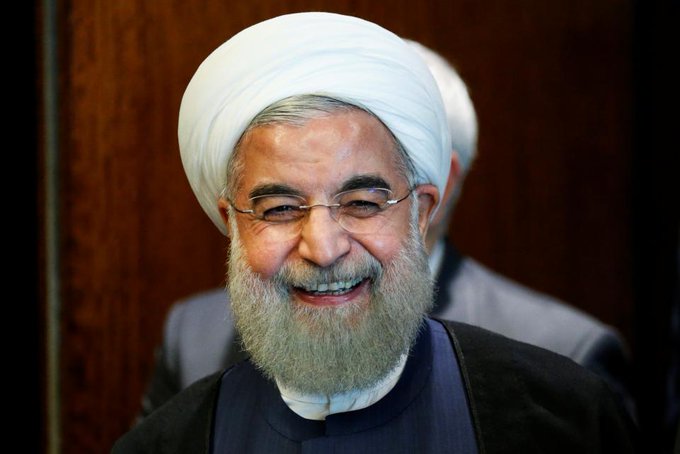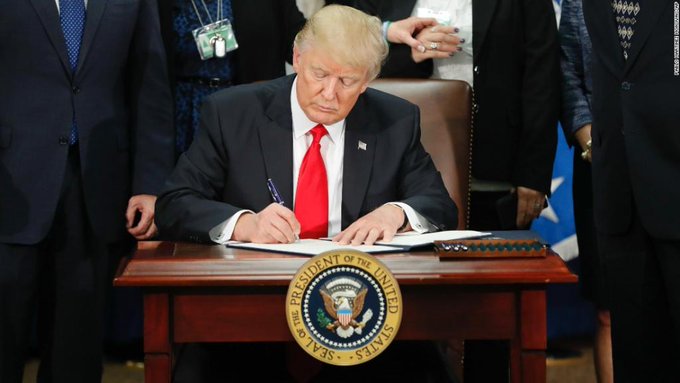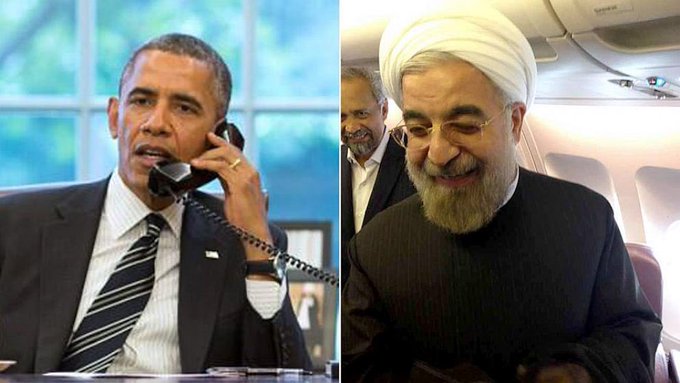In response to President Donald Trump’s immigration executive orders, Iran will ban U.S. citizens from entering the country.
Trump’s orders limited travel from seven Muslim-majority countries, which led to Iran announcing January 28 that it will ban all U.S. citizens from entering the country, CNN reported.
The orders are just the latest in much tension between the two countries throughout the years.
Here’s what you need to know about the United States and Iran’s relations:
1. Iran’s Travel Ban Comes 1 Day After Trump’s Orders
The countries that will have immigration to the U.S. restricted due to the orders signed January 27 are Syria, Iraq, Iran Libya, Sudan, Yemen and Somali, Fox News reported. According to NPR, the process has already began at U.S. airports.
The orders call for an “extreme vetting” process for all immigrants and visitors to the country.
Trump explained the need for the orders with “tens of thousands” of refugees already taken in by the U.S. He said during a speech, “We know nothing about them. They can say they vetted them. They didn’t vet them, they have no papers. How can you vet somebody when you don’t know anything about them and they have no papers?”
Under his executive power, Trump can set the number of refugees allowed into the U.S. Most recently, former President Barack Obama accepted 84,995 refugees in 2016, 12,587 of whom were from Syria. During this year, Obama had set the mark at 110,000, Time reported.
Fox News heard from sources close to Trump that the president has “plans to cut that (110,000 refugee number) by more than half to 50,000.
2. U.S. & British Intelligence Helped Orchestrate a Coup
Relations between the U.S. and Iran started in the 19th century. During World War II, Iran was invaded by U.S. allies, the United Kingdom and the Soviet Union.
Even with the invasion, the relations between Iran and the U.S. remained relatively positive until Mohammad Mossadeq took over the country. Mossadeq’s reign was overthrown by a coup organized by the CIA and the MI6. Part of the reason for the coup was because the prime minister wanted to nationalize Iran’s oil industry and expel foreign corporate representatives from the country.
After Mossadeq was overthrown, there were years of close alliance between the country and the U.S., but that all changed in 1979 during the Iranian Revolution. During the period, Iran had claimed the tensions shifted because of “perceived American arrogance” and “desire for global hegemony.”
3. Iran Held U.S. Hostages for 444 Days
The tensions between the two countries reached a climax under President Jimmy Carter.
A diplomatic standoff between Iran and the U.S. led to 52 American diplomats being held hostage for 444 days from November 4, 1979 until January 20, 1981.
It started when a group of Iranian students took over the U.S. Embassy in Tehran and is still the longest recorded hostage crisis in history.
There were many failed efforts to negotiate the release of the hostages, including using Navy ships during a rescue operation. The ordeal, known as Operation Eagle Claw, failed. It resulted in the deaths of eight servicemen from the U.S. and one civilian from Iran.
In 1980, the Iran-Iraq War began and the Iraanian government decided to enter negotiations with the U.S. for the hostages, with Algeria as the mediator.
The hostages were released to the U.S. after successful negotiations, and it came just minutes following President Ronald Reagan’s inauguration.
4. The Iran Nuclear Deal Was Struck in 2015
In 2002, an opposition group in Iran claimed that the country had been developing nukes in facilities. That led the U.S. alleging that Iran had been maintaining and developing the nukes, but the country insisted its program is only geared at generating electricity. But the U.S. stuck to its allegations, claiming that a nuclear-armed Iran “is not acceptable.”
Upon inspections, the U.S. and representatives from European countries found that Iran had enough gaseous material to make 10 atomic bombs and asked for the Security Council to act on the findings.
Sanctions had been made against Iran and negotiators reached a deal with Iran in 2015 to limit the country’s nuclear ability in return for lifting some of the oil and financial sanctions.
During his campaign, Trump said he would consider walking away from the Iran nuclear deal because it was “insufficiently tough.”
On January 17, Iran President Hassan Rouhani said there is no chance of renegotiating the deal. The New York Times reported that Rouhani said, “Mr. Trump says things like that he is not happy with the nuclear deal, or he calls it the worst agreement. These are more like slogans. I consider it unlikely that anything will happen in practice.”
5. Obama & Rouhani Had the First Conversation Between the 2 Countries in 30 Years
Former President Barack Obama and newly-elected Iran President Hassan Rouhani spoke by phone in 2013, Reuters reported.
The historic phone call is considered the highest-level of contact between the U.S. and Iran in 30 years and was the first step in negotiating the Iran nuke deal.
The call, which reportedly lasted roughly 15 minutes, came after the U.S. and Iran cut off diplomatic relations after 1979.
Obama told reporters during a White House briefing following the conversation with Rouhani:
While there will surely be important obstacles to moving forward and success is by no means guaranteed, I believe we can reach a comprehensive solution.
Before Obama’s call, the last time a president from the U.S. spoke with a leader from Iran was in 1979, when President Jimmy Carter talked via phone to Shah Mohammed Reza Pahlavi before he was overthrown, CNN reported.




